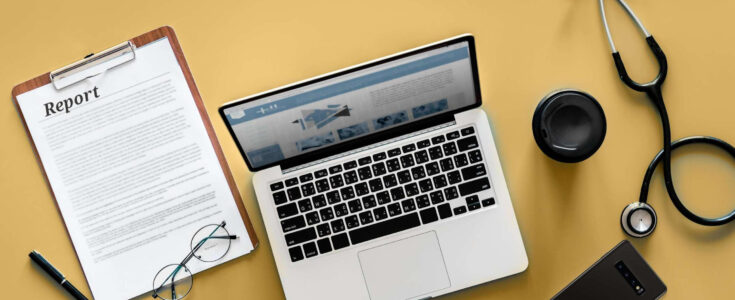
Healthcare Is Getting Better Soon

EXPLOITING BIG DATA FOR ILLNESS PREDICTION AND PREVENTION
The field of medical data capture is striding forward in leaps and bounds. The device revolution is making it easier for healthcare professionals to track down and solve problems faster and for ordinary people to assume a more proactive role in monitoring their own biological infrastructure and track their fitness efforts. Man and machine are getting closer.
Technology that can capture diet and lifestyle data is being integrated with wearable health technologies to give on-the-spot and up-to-the minute insights on how well, or otherwise, our bodies are performing. It’s not going to stop there. We are one obvious step away from the current capabilities we have of holding multi-functional super-intelligent devices in the hands, wearing them on the wrists or on our Bat-utility belts (uncool) to computer chip implants in the body (conceivably cooler, and less likely to get left in the bar).
We’re at a point where devices can scan, analyze, record and transmit health data in minutes. QuantuMDx Group’s Q-POC, for example, is justifiably called a ‘handheld laboratory’. It’s a DNA analyzer that takes no more than 15 minutes to diagnose infections and their inherent drug resistances. Doctors invariably see no more than a brief snapshot of a patient’s life, typically about 1% of it when matters are critical and remedial action is required. The problem for the overloaded healthcare system, globally, is that the important determinants of health, or the causes and symptoms of illness usually happen during the other 99% of a patient’s life.
THE ULTIMATE USER EXPERIENCE
The intersection of wearable tech developments and sophisticated data and information gathering creates a new zone where that elusive 99% can alleviate the healthcare burden and improve people’s lives. Healthcare professionals can take the data and make real recommendations for what people should be doing in their daily lives to optimize health and- the foreseen outcome – live longer. User experience doesn’t really get more enticing than that.
In wearables, we see a merging of real life and digital presence. We are able to discern the types of data that make the most sense to people. For instance, some want to see the total number of steps they’ve taken during the day. Others want to know the days that they are most active. The ability to interact with data and visualize it is powerful. The Nike fuel band, Fitbit, Under Armours Performance Monitor, Polar and Garmin heart rate monitors all work to capture meaningful data that can be used to help proactively manage health.
BIGGER DATA, SMALLER DEVICES
The bigger data gets the better we get at handling it. Eventually our medical records will be held in tiny devices that communicate with other devices to update each other; you’ll merely unclip your health monitor at the doctor’s surgery and the doctor will bump it against his own device to gain the full picture. The next logical step has to be that as you enter the doctor’s office, a scanner automatically grabs your data and throws it up onto the doctor’s screen.
If it all sounds too far off, just ponder the advances in enterprise mobility for example – in the supply chain, operatives wear their tasks on their sleeves, hooked straight into back office systems that dictate actions, monitor order progress, update central records and generally go about the daily business of improving efficiencies and driving greater profitability. In retail, store systems are picking up customer’s identities as they enter the store and pinging welcome messages to their smartphones, with personalized offers and suggestions on how to make best use of their time in the store. UX designers are already innovating in ways predicting next best offers and now in the medical field similar techniques are being explored to predict next best prescriptions. It’s getting better everywhere – and how’s that for an upbeat way to end a blog post?




